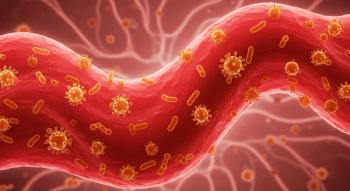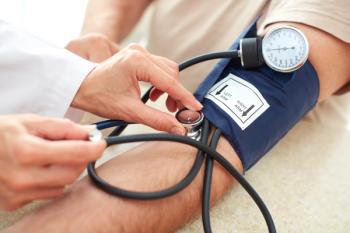
FDA Recommends 2025-2026 COVID-19 Vaccines Be Monovalent, Target LP.8.1 Strain
Key Takeaways
- The FDA recommends monovalent COVID-19 vaccines targeting the LP.8.1 strain for the 2025-2026 season, following VRBPAC's unanimous vote.
- LP.8.1, a JN.1 variant descendant, dominates 70% of circulating strains in the US, prompting targeted vaccine development.
Following a meeting of the Vaccines and Related Biological Products Advisory Committee, the FDA announced its recommendation of COVID-19 vaccines targeting LP.8.1, a strain of the JN.1 variant that has become dominant in the US.
The FDA has advised manufacturers of approved COVID-19 vaccines that, for the fall 2025 respiratory season in the US, COVID-19 vaccines should be monovalent JN.1-lineage-based and preferentially target the LP.8.1 strain. Currently, this is the most dominant strain of SARS-CoV-2 across the US and Europe.1
Based on VRBPAC Vote, FDA Recommends LP.8.1-Targeting Vaccine
The announcement followed a meeting of the Vaccines and Related Biological Products Advisory Committee (VRBPAC) to the FDA’s Center for Biologics Evaluation and Research (CBER). Following presentations from Moderna, Pfizer-BioNTech, and Novavax-Sanofi on COVID-19 vaccine immunogenicity data and strain circulation, the experts unanimously recommended that COVID-19 vaccines for the upcoming 2025-2026 respiratory season be composed using a monovalent JN.1 lineage. Following the vote, the committee discussed components of a specific JN.1-lineage strain for the 2025-2026 season, though members did not agree on a specific sublineage to target.1,2
LP.8.1, a descendant of the JN.1 variant that caused a global wave of new COVID-19 cases in 2024, has quickly spread since being designated a variant under monitoring by the World Health Organization and now encompasses 70% of currently circulating strains in the US. Although some at the meeting expressed confidence that the manufacturers could produce a new vaccine targeting LP.8.1 in time for the fall, others voiced concerns that new FDA guidance in the form of an LP.8.1 recommendation could impact vaccine availability.3,4
Questions Surround Future of COVID-19 Vaccine Guidance
Novavax, which produces a protein-based COVID-19 vaccine and requires a longer process compared with the mRNA capabilities of Pfizer and Moderna, could face obstacles to producing an updated vaccine targeting LP.8.1. Furthermore, questions abound regarding the FDA’s recent policy shift toward restricting future COVID-19 vaccine recommendations to older adults and high-risk groups while asking manufacturers for new randomized trials in healthy subjects, which may necessitate an altered testing and manufacturing process for the vaccines.5,6
The FDA’s new framework was implemented when approving Novavax’s Nuvaxoid COVID-19 vaccine, which was approved only for adults 65 years and older or those aged 12 to 64 years with comorbidities that put them at risk for severe COVID-19. Based on their framework, the agency requested a new randomized trial in a cohort of healthy adults aged 50 to 64 years to further elucidate the effects of the vaccine in this population. It remains to be seen in what populations the COVID-19 vaccine manufacturers will test their new candidates and how that affects the speed of the FDA’s approval process for these agents.1,6,7
Guidance from the FDA directing manufacturers to target LP.8.1 measures mirrors previous recommendations from the agency in past years. In 2024, the FDA recommended that COVID-19 vaccines for use in the fall of that year utilize the KP.2 strain of JN.1, which at that time was the dominant strain circulating in the US. The new recommendations reflect the evolving nature of COVID-19 and how SARS-CoV-2 continues to change in response to waning immunities and varying levels of vaccine coverage among the population.1,8
With new strain recommendations, there is poised to be a wave of change in the COVID-19 vaccine space and countless impacts on patients. As these new vaccines become available, pharmacists and health care providers play a critical role in counseling patients regarding the best vaccine candidate for their health and evaluating their risk of serious COVID-19. Given the FDA’s new guidance on COVID-19 vaccine testing and analysis, pharmacists will be essential in easing patient concerns regarding the framework and affirming the safety and efficacy of these vaccines in preventing COVID-19-related hospitalization and death.
REFERENCES
1. FDA. COVID-19 vaccines (2025-2026 formula) for use in the United States beginning in fall 2025. Published May 22, 2025. Accessed Online May 23, 2025. https://www.fda.gov/vaccines-blood-biologics/industry-biologics/covid-19-vaccines-2025-2026-formula-use-united-states-beginning-fall-2025
2. FDA. Vaccines and Related Biological Products Advisory Committee May 22, 2025 meeting announcement. Published May 22, 2025. Accessed Online May 23, 2025. https://www.fda.gov/advisory-committees/advisory-committee-calendar/vaccines-and-related-biological-products-advisory-committee-may-22-2025-meeting-announcement#event-information
3. CDC. COVID data tracker – Monitoring variant proportions. Atlanta, GA: US Department of Health and Human Services. Accessed May 23, 2025. https://covid.cdc.gov/covid-data-tracker
4. Abene S. Global spread of the LP.8.1 SARS-CoV-2 variant. ContagionLive. Published February 13, 2025. Accessed May 23, 2025. https://www.contagionlive.com/view/global-spread-of-the-lp-8-1-sars-cov-2-variant-insights-into-transmission-dynamics-and-immune-resistance
5. Branswell H. FDA gives Covid vaccine manufactuers instructions for next fall’s shot. Stat. Updated May 22, 2025. Accessed May 27, 2025. https://www.statnews.com/2025/05/22/fda-gives-covid-vaccine-manufacturers-instructions-for-next-falls-shot/
6. Halpern L. FDA to restrict future COVID-19 vaccine recommendations to older adults, high-risk groups. Pharmacy Times. Published May 21, 2025. Accessed May 27, 2025. https://www.pharmacytimes.com/view/fda-to-restrict-future-covid-19-vaccine-recommendations-to-older-adults-high-risk-groups
7. Halpern L. FDA approves Novavax COVID-19 vaccine for patients 65 years and older, those with underlying conditions. Pharmacy Times. Updated May 19, 2025. Accessed May 27, 2025. Updated May 19, 2025. Accessed May 27, 2025. https://www.pharmacytimes.com/view/fda-approves-novavax-covid-19-vaccine-for-patients-65-years-and-older-those-with-underlying-conditions
8. FDA. Updated COVID-19 vaccines for use in the United States beginning in fall 2024. Updated August 13, 2024. Accessed May 27, 2025. https://www.fda.gov/vaccines-blood-biologics/updated-covid-19-vaccines-use-united-states-beginning-fall-2024
Newsletter
Stay informed on drug updates, treatment guidelines, and pharmacy practice trends—subscribe to Pharmacy Times for weekly clinical insights.




















































































































































































































